Learn how to make cottage cheese with minimal ingredients in just a few simple steps. It’s a healthy and tasty snack when served with fresh fruit, a rich and savory addition to main dishes, and the perfect base for creamy and healthy dips.
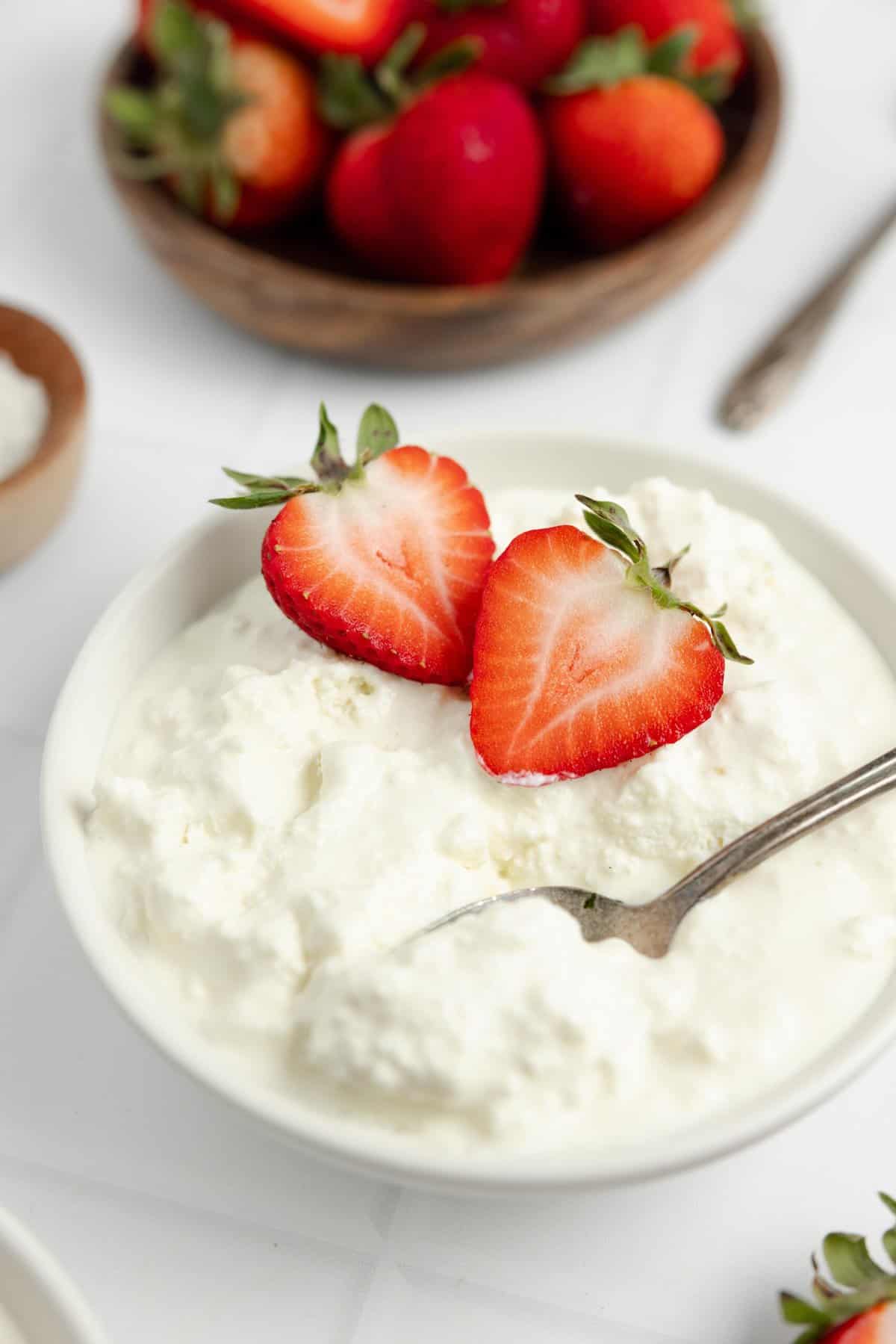
This post contains affiliate links, which means I make a small commission at no extra cost to you. See my full affiliate link disclosure here.
Cottage cheese is an easy recipe for curdling milk with an acid, letting it rest, then straining the curds and adding cream. It’s such a simple process that yields a high-protein food with a satisfyingly creamy texture.
It’s often underappreciated, perhaps because of the texture of the curds or the mildly acidic flavor from the vinegar. Yet, I find that kids love it.
This homemade cottage cheese is easily enjoyed on its own, but it can be served so many different ways whether sweet or savory. Add sliced tomato, salt, and black pepper for a savory dish, use it in zucchini lasagna, or enjoy it sweet with a swirl of homemade peach preserves or fresh fruit.
With roughly 14 grams of protein per half-cup serving, cottage cheese is a great option for a low-fat snack that keeps you feeling full longer.
Why You’ll Love This Creamy Cottage Cheese
It’s a delicious and nutritious snack: Cottage cheese is delicious whether served sweet or savory. It’s rich and creamy with a fun texture. It’s also an easy way to get more protein in your family’s diet through a healthy snack.
It’s healthier than store-bought: You’ll notice that cottage cheese purchased from the store typically has a whole host of additives for extended shelf life and preserved consistency. Not so with homemade, in which there are four simple ingredients for a far fresher and healthier product.
It’s simple to make: This recipe uses everyday ingredients that you probably already have in your kitchen. It also makes good use of extra milk or milk that is beginning to sour.
Ingredients
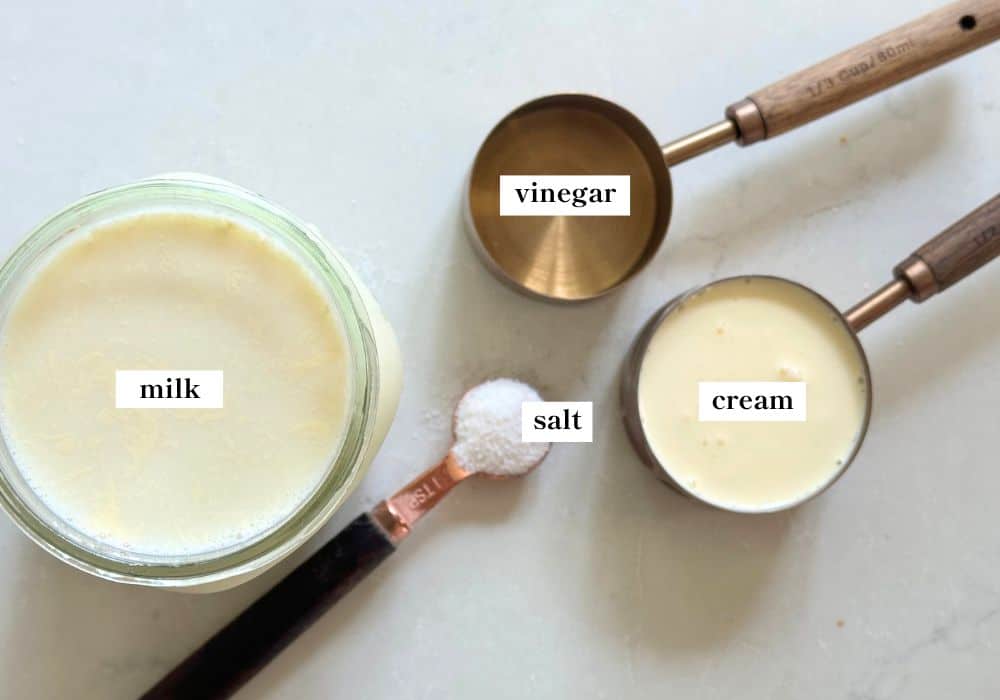
Milk: You can use almost any kind of cow milk, raw or pasteurized, whole or low-fat. However, don’t use ultra-heat pasteurized, as the milk proteins are altered and it will not form curds properly. I prefer whole milk for its rich flavor and creamier consistency.
Vinegar: If you don’t have white vinegar, you can substitute apple cider vinegar or lemon juice.
A full ingredient list with exact amounts can be found in the recipe card below.
Tools You May Need
Food thermometer
Cheesecloth, tea towel, or yogurt strainer
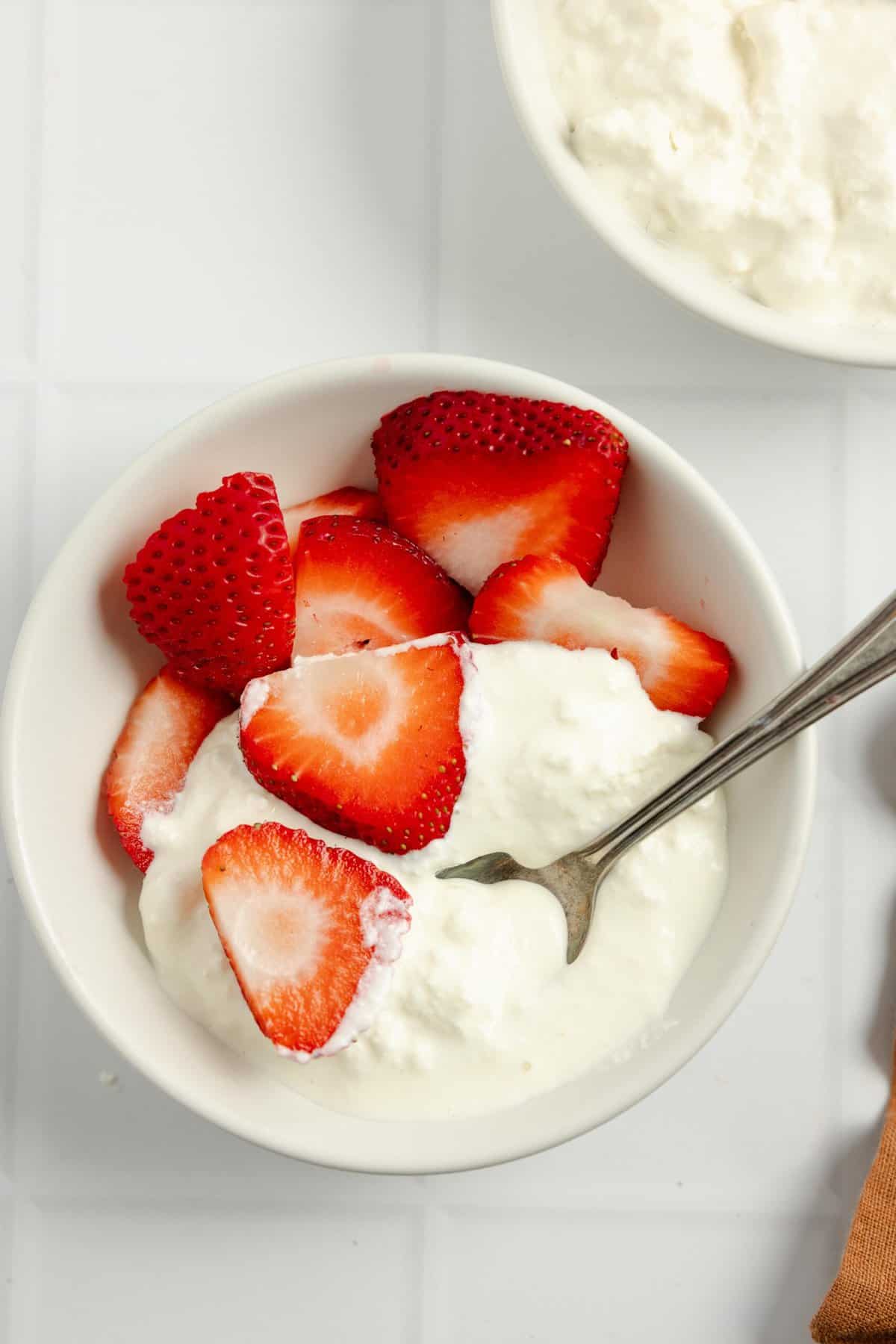
How to Make Cottage Cheese
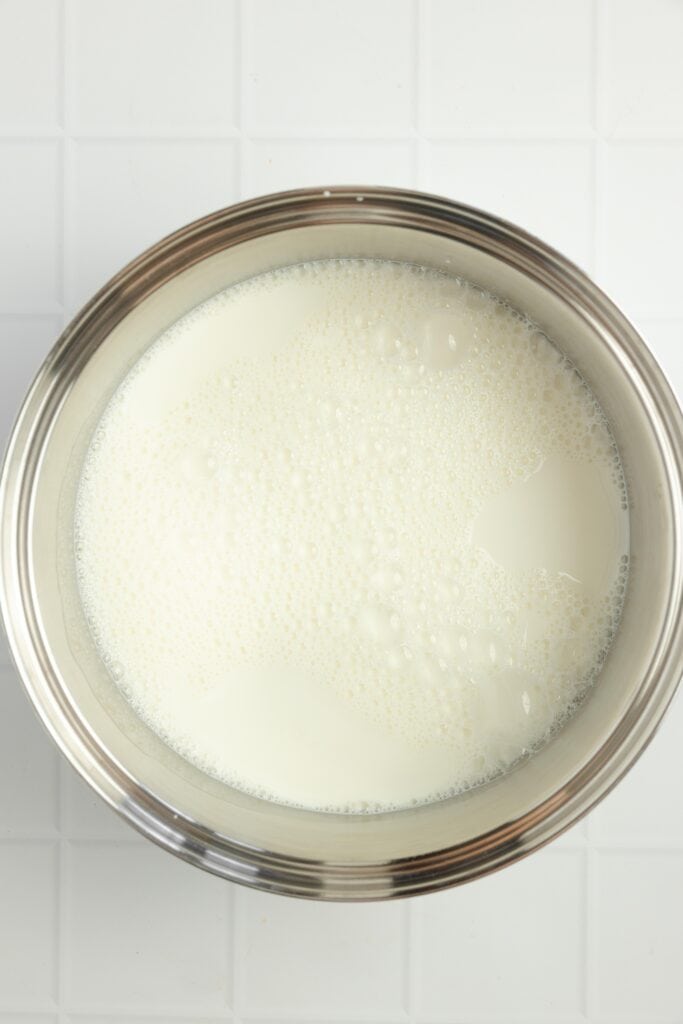
Step 1: Pour the milk into a large pot over medium heat. Stir often so the bottom doesn’t scald and the heat is dispersed. Heat slowly until it begins to simmer or reaches 185 degrees Fahrenheit. It will be frothy but should not boil.
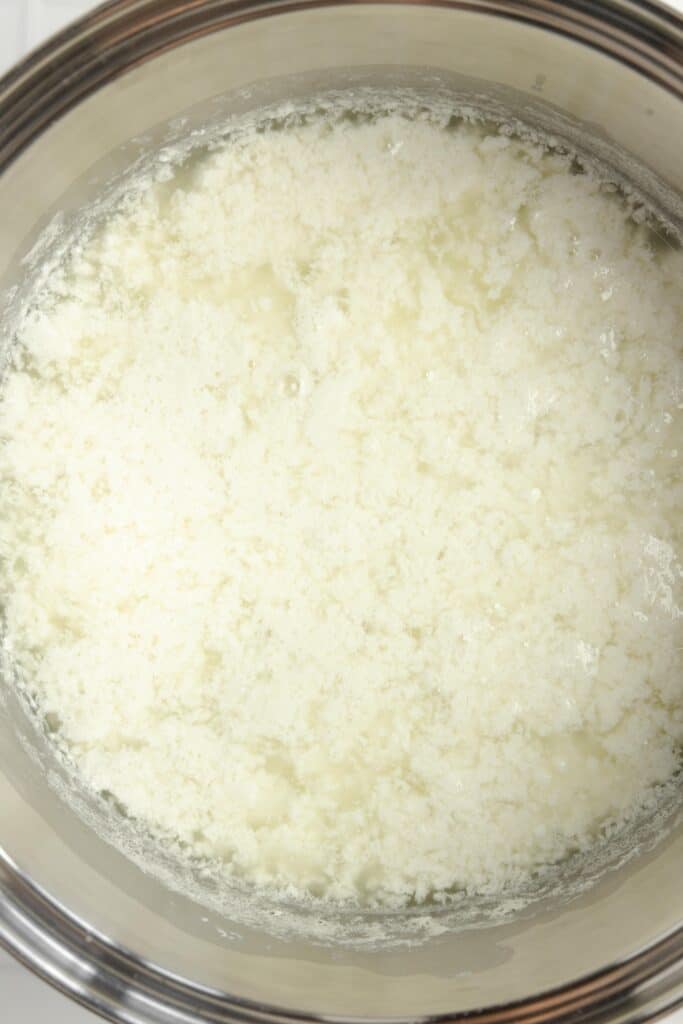
Step 2: Add the vinegar and salt to the milk. Stir, then remove from the heat and let sit for 45 minutes. You will see the milk curdling.
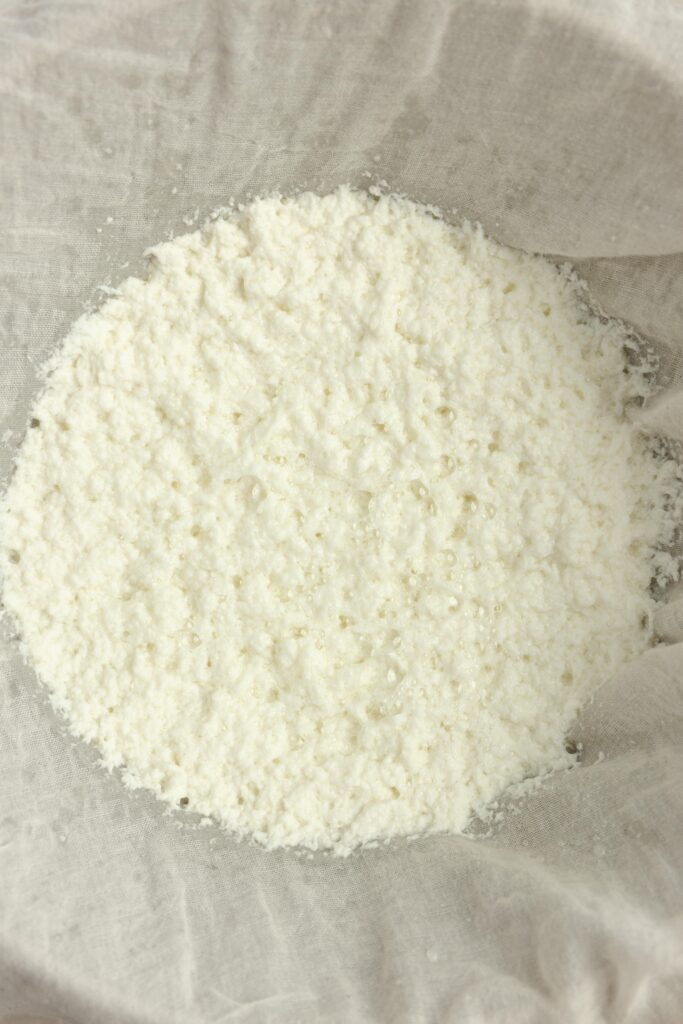
Step 3: Strain the curds through some cheesecloth or a tea towel positioned over a large bowl to catch the whey. Place the curds into a bowl with a lid or plastic wrap and refrigerate for 2 hours. Store the whey in the fridge for use in other recipes!
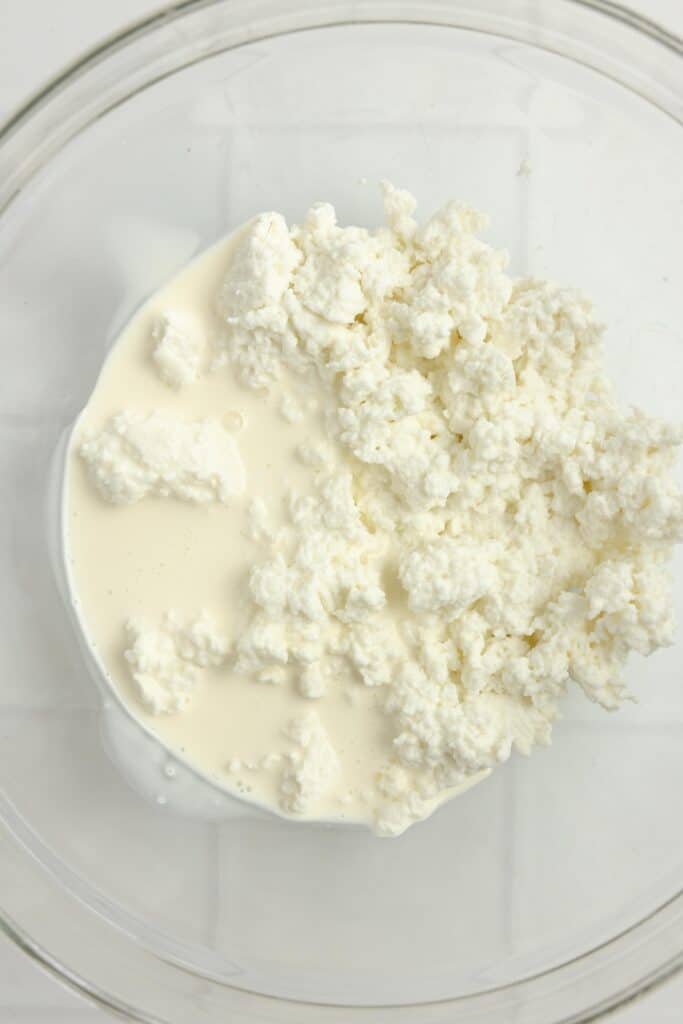
Step 4: Once chilled, gently break up the curds and mix with ¼ cup of heavy cream. For a smaller curd, break it up a little more, and for a creamier consistency, add another ¼ cup of cream. Serve cold.
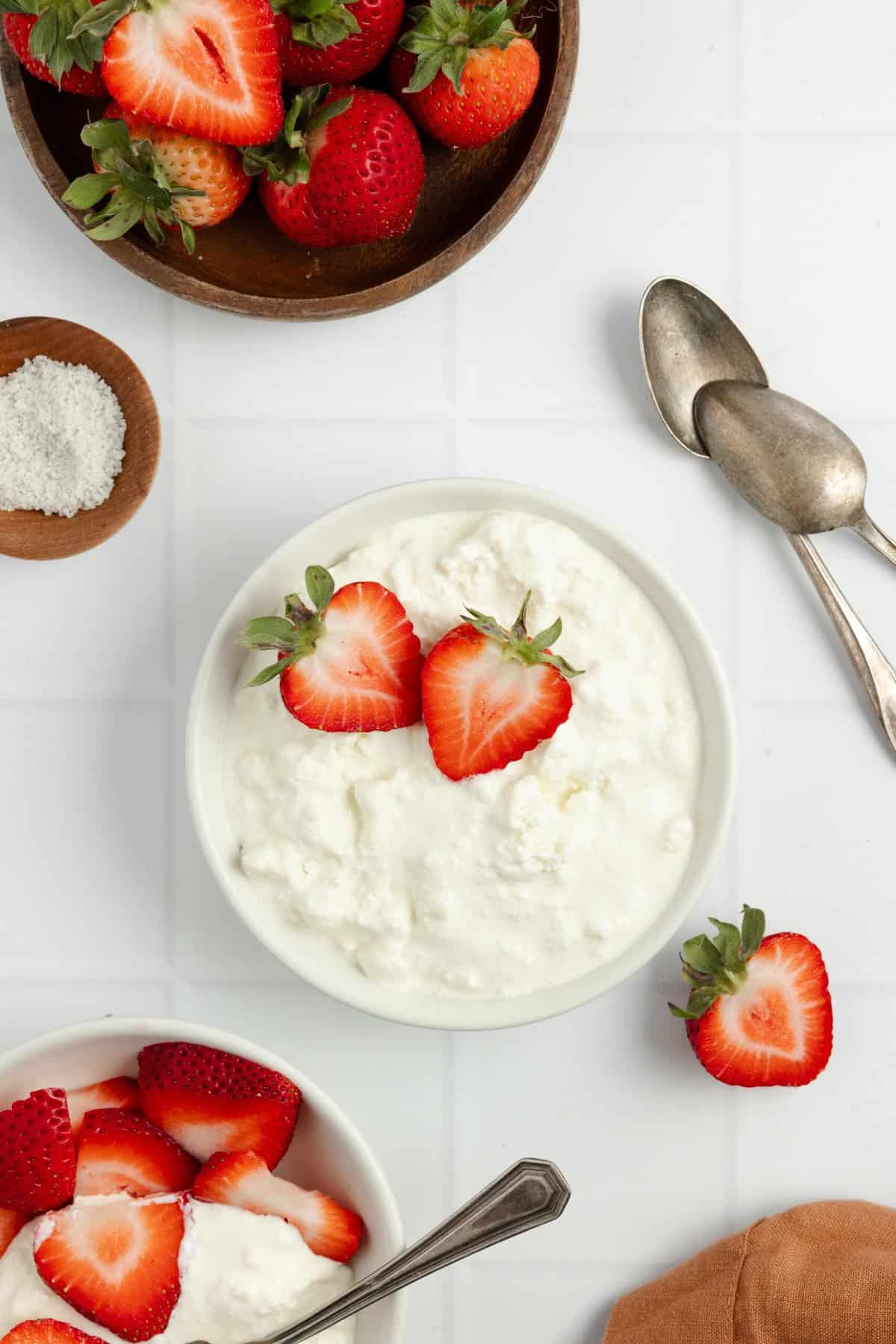
Tips
- Bring the milk to temperature, but be careful not to boil or heat it too quickly as this can impact the strength of the curds.
- Don’t use ultra-heat processed milk.
- As an added step, you can gently rinse the strained curds with cold water to make them less sour before adding the cream.
- Strain well to end up with firm curds. You can squeeze the cottage cheese inside the cheesecloth or tea towel to remove even more liquid.
- When storing the cottage cheese in the refrigerator, you can place the airtight container upside down, creating an air pocket that serves as a vacuum seal to extend the freshness.
Storage
Store cottage cheese in an airtight container in the fridge for up to a week. Monitor for any developing sour smells or discoloration to determine the freshness.
Cottage cheese does not freeze well, so that is not recommended. It develops a less pleasant, gritty texture.
How to Serve
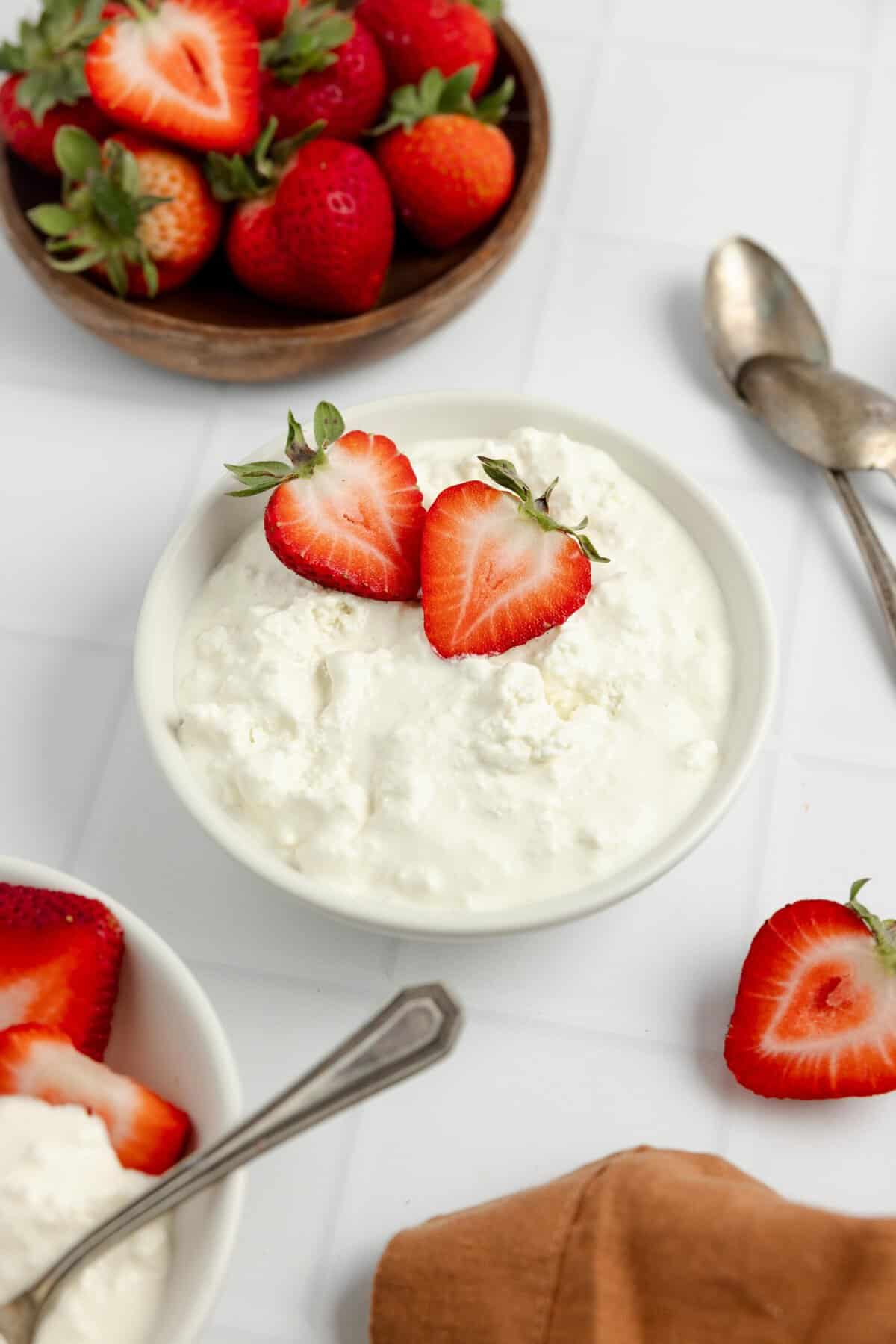
- Cottage cheese is a great protein-packed snack that can be served with fresh fruit, berries, strawberry jam, honey, nuts, or seeds.
- Make it savory and top it with chopped veggies like avocado, sweet peppers, or cucumber, or add crumbled bacon, fermented salsa, pico de gallo, or fermented hot sauce.
- Use cottage cheese in place of ricotta in lasagna, or add it to other pasta dishes for added creaminess, texture, and richness.
- Add fresh herbs and spices to make a healthy veggie dip.
How to Use Up Leftover Whey
When making cottage cheese, you’ll inevitably end up with quite a bit of whey. If you’re wondering what on earth to do with it all, here are some suggestions!
- Make homemade ricotta cheese
- Replace the water with whey in sourdough discard English muffins, beginner’s sourdough bread or Pullman bread
- Add it to soups like this homestyle chicken noodle soup
- Use it in smoothies like this very berry kefir smoothie
Recipe FAQs
You be the judge, but the result is fresh and delicious, and it’s not an intensive process. It’s a great way to use up extra milk or milk that is about to sour.
One gallon of milk will yield approximately 3 cups of cottage cheese.
Cow’s milk of varying fat content.
Ricotta is typically made from whey, which provides a soft but gritty texture with very small curds. Cottage cheese is made from milk, and it has more noticeable curds, giving it a looser texture.
More Sourdough Recipes from the Farmhouse
- Homemade Ricotta Cheese
- How to Make Kefir Cheese
- How to Make Sour Cream from Raw Milk
- The Best Homemade Cream Cheese
- How to Make Yogurt in the Instant Pot
- Sourdough Beignets
If you try this recipe and love it, I would love it if you could come back and give it 5 stars! Tag me on Instagram @farmhouseonboone.
Cottage Cheese
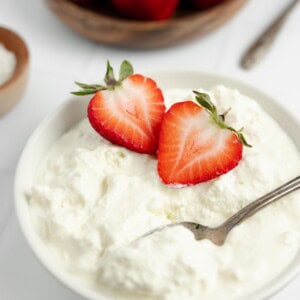
Ingredients
- 6 cups whole milk
- ⅓ cup white vinegar
- 1 tsp salt
- ¼-½ cup heavy cream
Instructions
- Pour the milk into a large pot over medium heat. Stir often so the bottom doesn’t scald and the heat is dispersed. Heat slowly until it begins to simmer or reaches 185 degrees Fahrenheit. It will be frothy but should not boil.
- Add the vinegar and salt to the milk. Stir, then remove from the heat and let sit for 45 minutes. You will see the milk curdling.
- Strain the curds through some cheesecloth or a tea towel positioned over a large bowl to catch the whey. Place the curds into a bowl with a lid or plastic wrap and refrigerate for 2 hours.
- Once chilled, gently break up the curds and mix with ¼ cup of heavy cream. For a smaller curd, break it up a little more, and for a creamier consistency, add another ¼ cup of cream. Serve cold.
Notes
- Bring the milk to temperature, but be careful not to boil or heat it too quickly as this can impact the strength of the curds.
- Don’t use ultra-heat processed milk.
- As an added step, you can gently rinse the strained curds with cold water to make them less sour before adding the cream.
- Strain well to end up with firm curds. You can squeeze the cottage cheese inside the cheesecloth or tea towel to remove even more liquid.
- When storing the cottage cheese in the refrigerator, you can place the airtight container upside down, creating an air pocket that serves as a vacuum seal to extend the freshness.
Nutrition
Nutrition information is automatically calculated, so should only be used as an approximation.
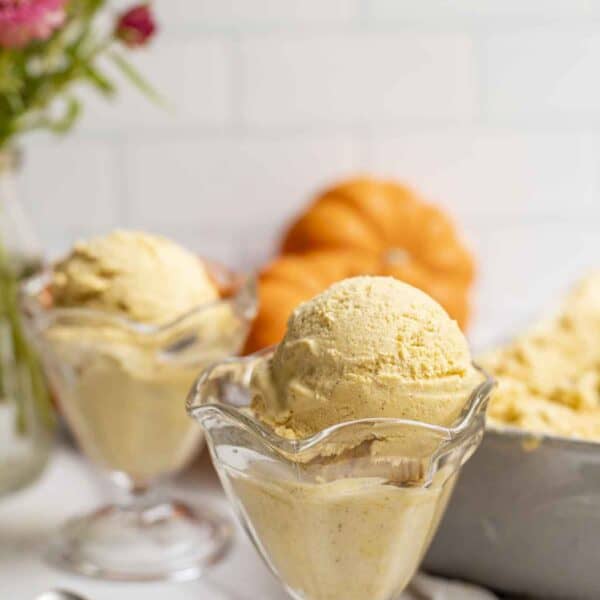

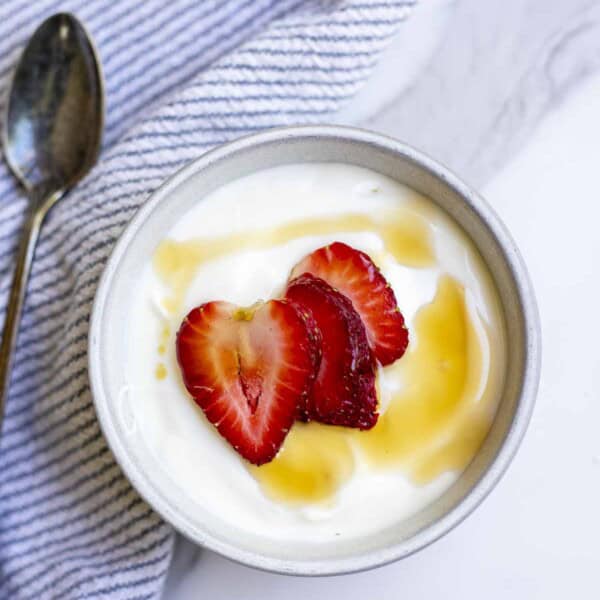







Can you make this recipe using raw goat milk?
Yes.
This is, hands down, one of the easiest and most delicious recipes ever. My family loves that the cottage cheese is so wholesome without nasty additives. Thanks so much Lisa!